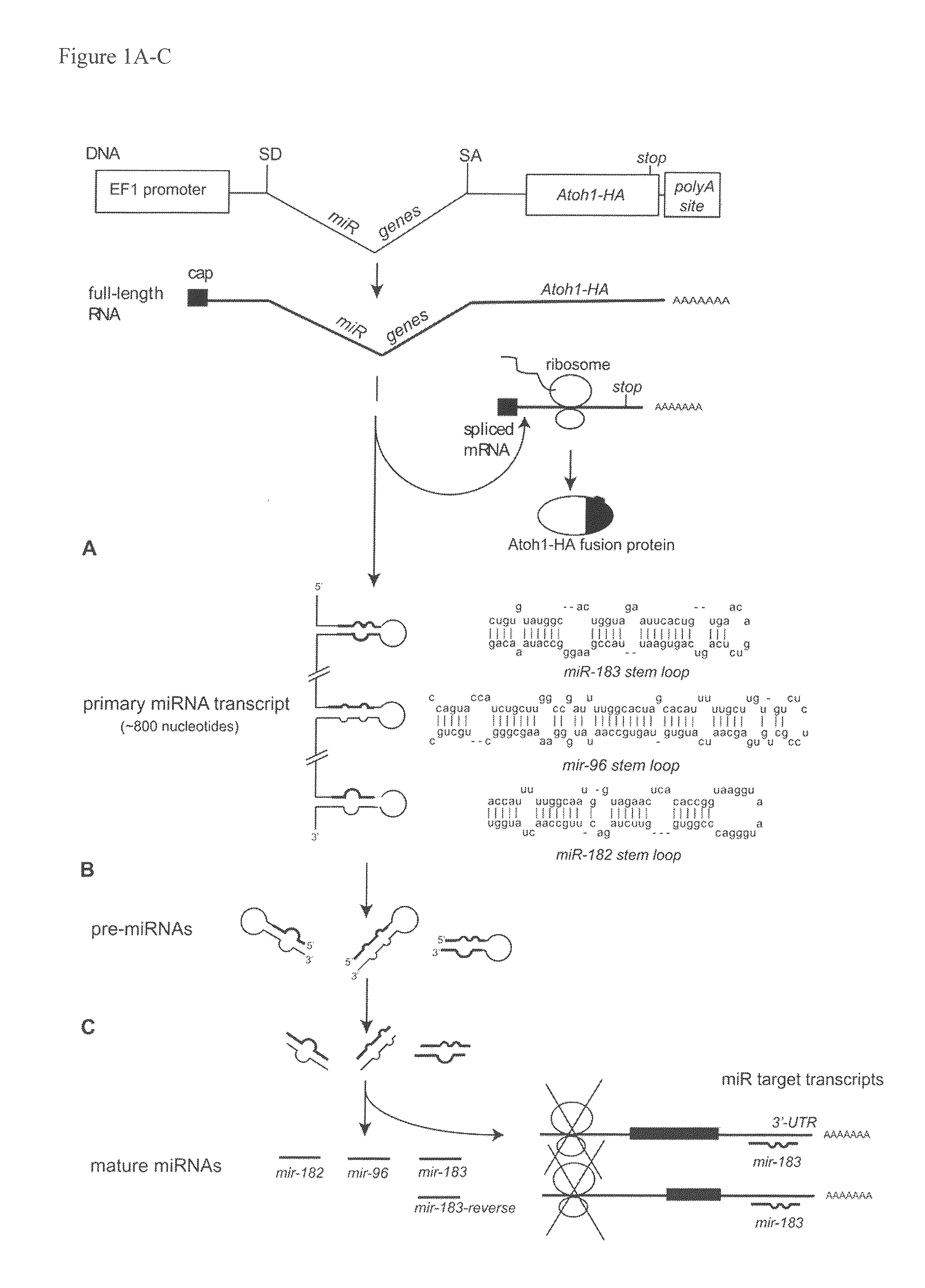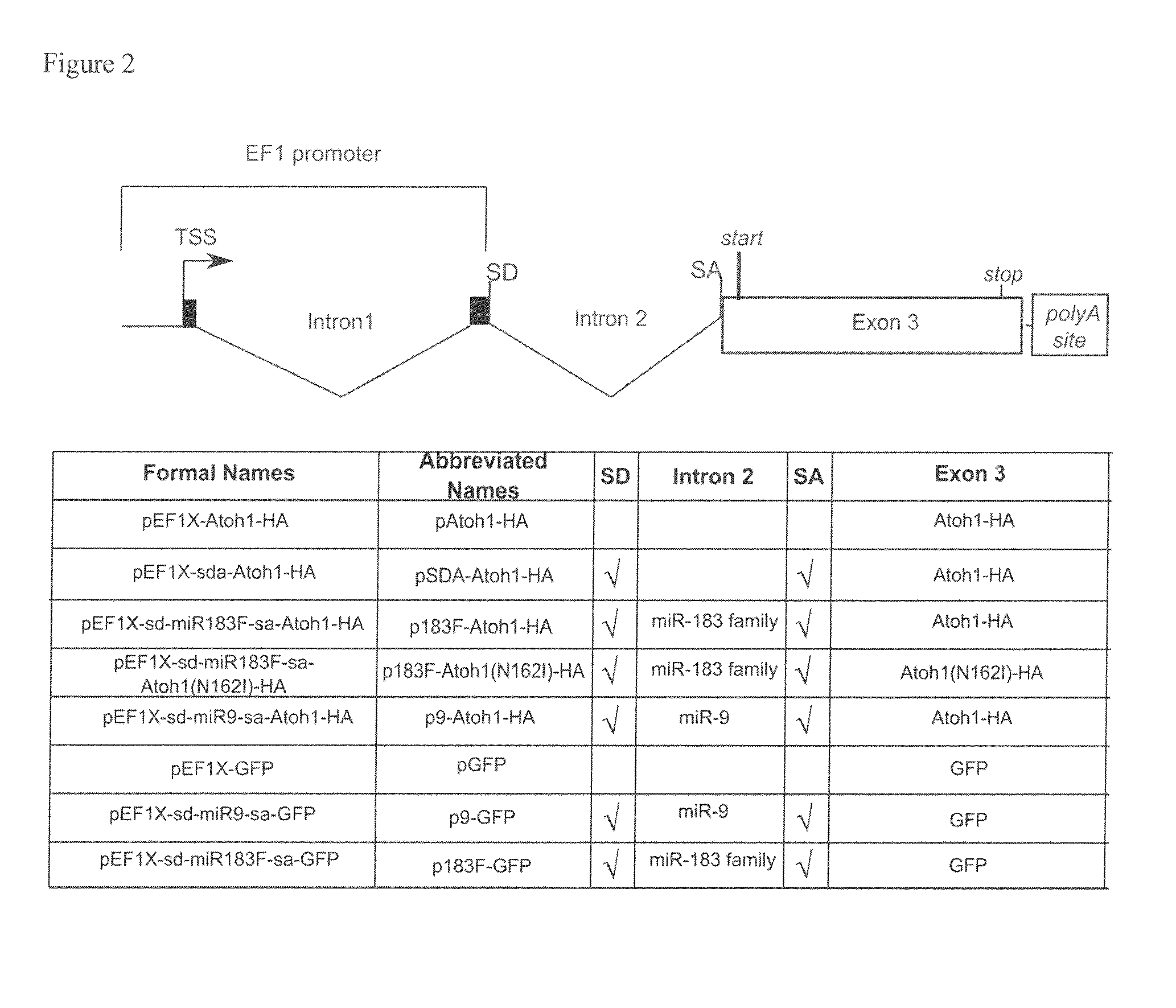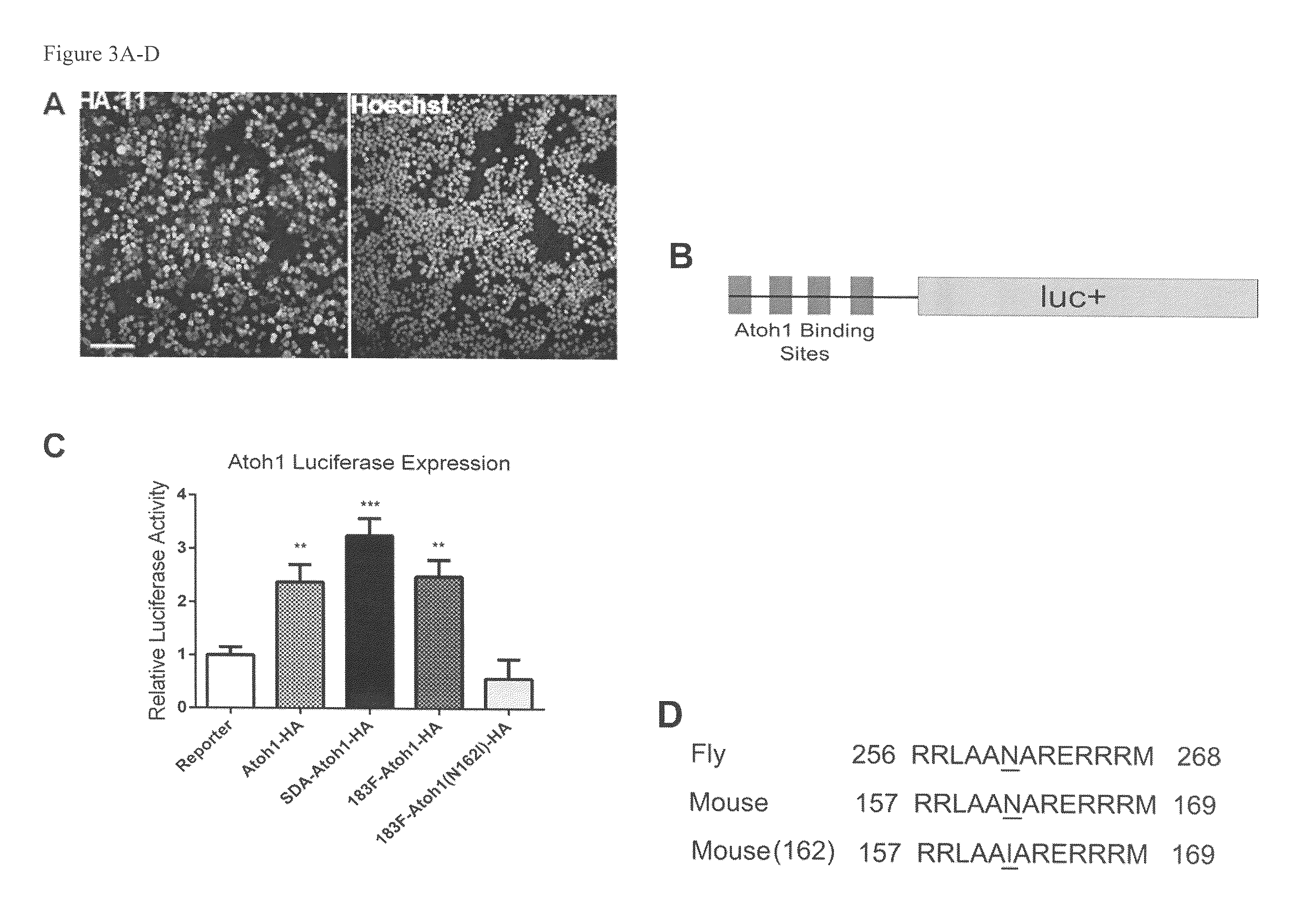BICISTRONIC GENE TRANSFER TOOLS FOR DELIVERY OF miRNAS AND PROTEIN CODING SEQUENCES
a technology of mirna and bicistronic gene transfer, applied in the field of microrna (mirna) technology, can solve the problems of inability to easily identify, inability to perform subsequent phenotypic analysis, and inability to produce the two factors at the same tim
- Summary
- Abstract
- Description
- Claims
- Application Information
AI Technical Summary
Benefits of technology
Problems solved by technology
Method used
Image
Examples
example 1
Bifunctional Plasmid Construction
[0100]The Atoh1 coding sequence was PCR amplified from the pEF1-Atoh-IRES-GFP vector. To facilitate cloning and protein detection, one primer introduced an EcoRI site, while the other primer added an influenza hemagglutinin (HA) tag (YPYDVPDYA; SEQ ID NO:12) to the C-terminus of Atoh1 coding sequence and a NotI site (the sequences of all the primers used are provided in Tables 3-6). Atoh-HA was cloned into pEF1X (a modified version of the Invitrogen pEF1 / myc-His C vector where the Neomycin cassette was removed; provided by Cliff Ragsdale) as an EcoRI-NotI fragment and the entire fusion was verified by sequencing (Purdue Genomics Center).
[0101]To construct an artificial miR183-containing intron, a SalI-HindIII fragment containing a splice donor, three restriction sites XbaI, BamHI and XhoI, polypyrimidine tract, branch point, and a splice acceptor was generated by PCR (the tract, branch point and splice acceptor sequences were taken from Lin and Ying,...
example 2
Mutation of Atoh1-HA Fusion Protein
[0105]To introduce the N162I substitution in Atoh-1, site-directed mutagenesis was performed with Quikchange 2XL (Strategene) according to the manufacturer's instructions. Primers (Table 6) were designed to induce a point mutation to change the amino acid 162 from Asparagine to Isoleucine in the Atoh1-HA fusion protein encoded by pEF1X-sd-miR183F-sa-Atoh-HA creating pEF1X-sd-183F-sa-Atoh1(N162I)-HA.
TABLE 6Sequences used to introduce Atoh1 mutation.Atoh1MutationPrimersForwardggaggctggcagcaatcgcaagggaacgg(SEQ ID NO: 31)Reverseccgttcccttgcgattgctgccagcctcc(SEQ ID NO: 32)
example 3
HEK293T Plasmid Transfection
[0106]HEK293T cells were cultured with modified DMEM supplemented with L-glutamine, antibiotics, and 10% calf serum. Using Lipofectamine 2000 (Invitrogen), cells seeded in 6-well plates were transfected with plasmids of interest. Collection time was assay dependent.
PUM
 Login to View More
Login to View More Abstract
Description
Claims
Application Information
 Login to View More
Login to View More - R&D
- Intellectual Property
- Life Sciences
- Materials
- Tech Scout
- Unparalleled Data Quality
- Higher Quality Content
- 60% Fewer Hallucinations
Browse by: Latest US Patents, China's latest patents, Technical Efficacy Thesaurus, Application Domain, Technology Topic, Popular Technical Reports.
© 2025 PatSnap. All rights reserved.Legal|Privacy policy|Modern Slavery Act Transparency Statement|Sitemap|About US| Contact US: help@patsnap.com



